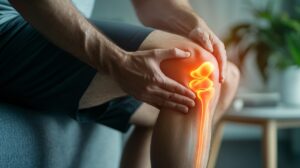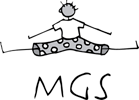 I’ve just ruptured my ACL. What do I do now?
I’ve just ruptured my ACL. What do I do now?
Winter is a busy time of year in sports. All football codes are in full swing, as is netball. The snow fields have opened and skiers and snowboarders of all ages are hitting the slopes. All of these sports have a higher than average risk of knee injury, particularly ACL injuries. The evidence and research around ACL injuries is always changing and being updated. Below is a clear outline of what your management options would be for a garden variety ACL rupture, note this does not include any knee injury that includes meniscus tears, MCL tears, fractures etc.
Option 1: ACL Reconstruction
“I need surgery.” This is what generally comes to find the first time any patient has an ACL rupture confirmed. ACL reconstructions and the different techniques associated with them have been improved and finely tuned over the past 60 or so years. This is the preferred option of elite athletes and people who have a strict deadline to return to sport or physical activity. The first steps to take is book to see your GP to obtain a knee surgeon referral. Expect the return to sport process to take at least 9 months from the date of your surgery.
Option 2: Delayed ACL Reconstruction
Delaying surgery by at least 3 months has been shown to give the best outcomes down the track. Compared to the immediate surgery option explained above, delaying surgery allows the knee to recover from the original trauma of the injury and to regain quads strength and knee stability. An ACL reconstruction can be considered to be a ‘second trauma’ to the knee and ultimately makes the return to sport and function journey potentially longer and more difficult. Research on delayed vs immediate surgery is unclear and so far suggests there is little difference between the two groups at a 2-year follow up (Shen et al.,). Delaying an ACL reconstruction also allows you to consider the next option.
Option 3: Non-operative Management
Rehabilitation alone is a viable option for the right person. The ACL’s role is to keep the knee stable at an end-of-range hyperextension or pivoting movement, otherwise it isn’t required for normal day to day activities. Your chance of doing well with this approach depends on a few factors. Your knee needs to be stable for with no periods of instability, you need to have almost symmetrical power and strength after the rehab period, and the demands on your knee aren’t unrealistic (e.g. you are not playing field or court sports). This approach takes the same amount of physiotherapy and rehabilitation as the previous two options, but perhaps with a shorter timeframe.
Option 4: Cross Bracing Protocol.
A relatively new option has emerged recently, being the Cross Bracing Protocol. Devised by Dr Tom Cross of Stadium Sports Medicine Clinic in Moore Park, Sydney. Preliminary research (Filbay et al.,) shows a good success rate in allowing the ACL to heal naturally with a protocol using a fixed range of motion knee brace. This understandably very appealing and is a fantastic outcome. The only catch is that you will need to be placed in the brace by day 8 of your injury by a sports physician (ideally Dr Cross himself), your type of ACL injury will need to satisfy certain criteria and it is a difficult protocol to go through, not everyone will be able to practically adhere to it. Regardless this is an interesting option and research on this approach is ongoing.
On a whole, an ACL injury is a significant injury with a significant period of time spent recovering, regaining strength and fitness to return to sport and activity. There is more than one option out there and everyone has different needs, goals and abilities. Your best first step is to book with any MGS physiotherapist to discuss a plan and what will work best for your individual case. MGS Physiotherapy also provides the full rehab experience, including outdoor running sessions for those returning to sport.
References
- Optimal Timing of Anterior Cruciate Ligament Reconstruction in Patients With Anterior Cruciate Ligament Tear: A Systematic Review and Meta-analysis. JAMA Netw Open. 2022 Nov 1;5(11)
Shen X, Liu T, Xu S, Chen B, Tang X, Xiao J, Qin https://www.ncbi.nlm.nih.gov/pmc/articles/PMC9672975/#:~:text=In%202021%2C%20Reijman%20et%20al,%2Dyear%20follow%2Dup%20assessment.
- Healing of acute anterior cruciate ligament rupture on MRI and outcomes following non-surgical management with the Cross Bracing Protocol. Br J Sports Med. 2023
Filbay SR, Dowsett M, Chaker Jomaa M, Rooney J, Sabharwal R, Lucas P, Van Den Heever A, Kazaglis J, Merlino J, Moran M, Allwright M, Kuah DEK, Durie R, Roger G, Cross M, Cross T
